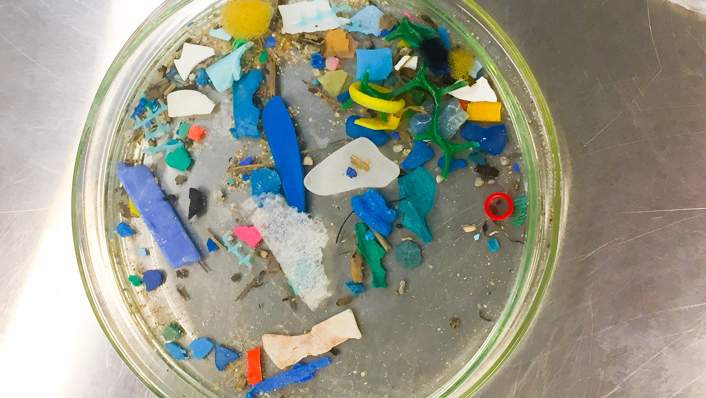Plastic pollution is being found throughout oceans around the world, including Australia’s Great Barrier Reef World Heritage Area. This global issue is attracting growing concern due to its effect on marine organisms and ecosystems. To protect the health and resilience of our tropical marine ecosystems, we are determining the presence, effects and sources of microplastics.
What are microplastics?
Microplastics are plastic items that are smaller than 5 mm, and can have a variety of shapes such as particles or fibres. Based on their origin, they are generally divided up into primary microplastics, such as microbeads in face wash and toothpaste, or secondary microplastics, such as fragments from plastic bags or fibres from textiles.
Research on microplastics in the marine environment is relatively new, and the development of robust methods for collection and analysis of marine environmental samples are a major focus area for AIMS.
Our science – from the field to the lab
AIMS researchers have developed detailed workflows for detecting and characterising microplastics in seawater samples. This method allows researchers to gather reliable information on levels of contamination by microplastics and other anthropogenic microdebris.
A key part of understanding plastics in the marine environment is being able to identify the type of microplastic found in seawater samples. To do this, our team uses a specialised technique called Fourier transform infrared imaging spectroscopy. Infrared light is sent through the material and the amount of light absorbed via the material’s vibrational response is measured. This information is converted into a chemical signature or fingerprint which is then compared against a library of known plastic examples to help identify its source.
Initial seawater sampling by the AIMS team found microplastics floating in remote waters off northern Western Australia, including the Kimberley coast. Since then, additional surveys have been conducted along the coast of northern Australia, including Scott Reef, around Groote Eylandt, and the Coral Sea. These findings have further piqued our interest into taking a closer look at the waters of the Great Barrier Reef.
The team now conducts three field trips a year, towing for microplastics in surface waters of the Great Barrier Reef, from Townsville to Cape Tribulation, in Queensland’s far north. These surveys provide a baseline of microplastic contamination for future monitoring efforts.
Working together to understand microplastics in the tropics
AIMS collaborates with institutions in Australia as well as overseas to improve our understanding of microplastic contamination in tropical marine waters.
Microplastic tows of waters surrounding the Yongala wreck dive site near Townsville have been incorporated into the sampling schedule of the Integrated Marine Observing System National Reference Stations project since 2016.
We are working with James Cook University through AIMS@JCU to understand the ecological risks of microplastic contamination of key coral reef organisms on the Great Barrier Reef such as corals, sponges, and sea cucumbers.
Our partnerships in microplastics also reach over international waters to the Institute of Oceanology Chinese Academy of Sciences (IOCAS), where we are examining and comparing the effects of microplastic contamination in seafood species in both Australia and China.


